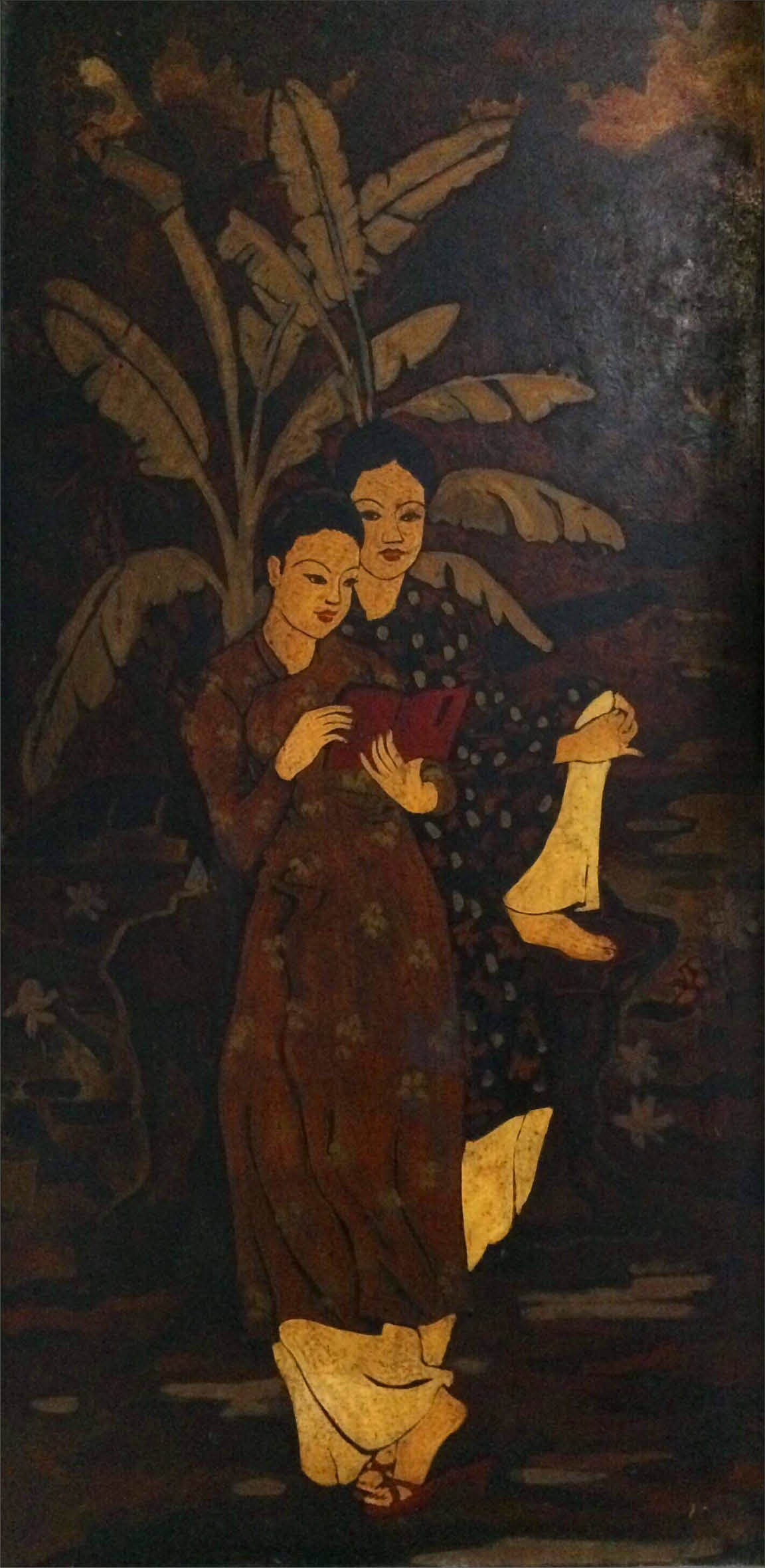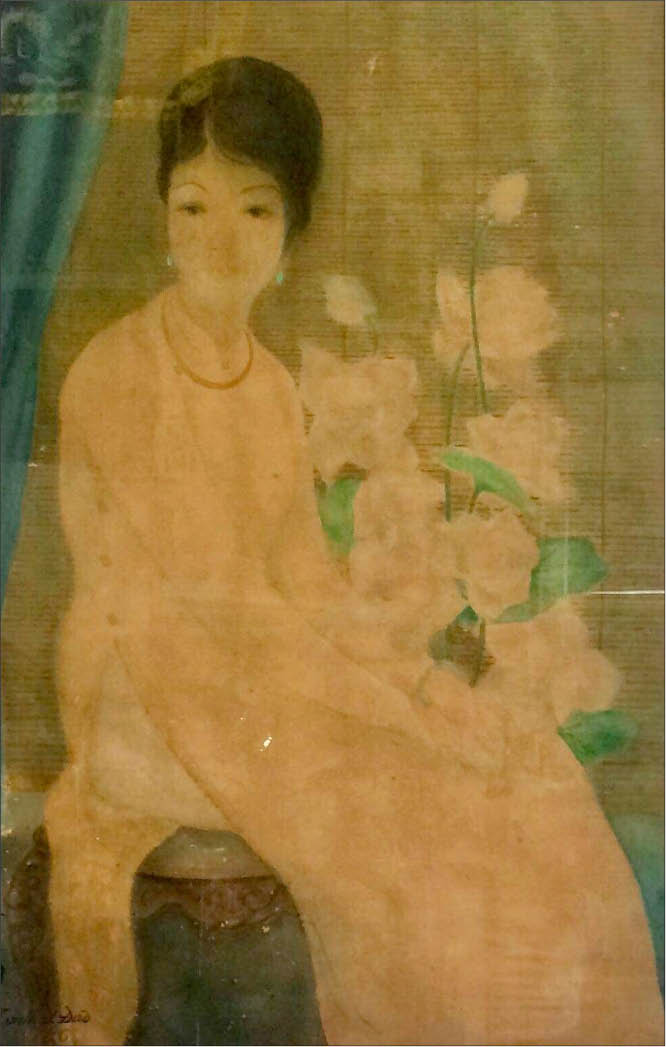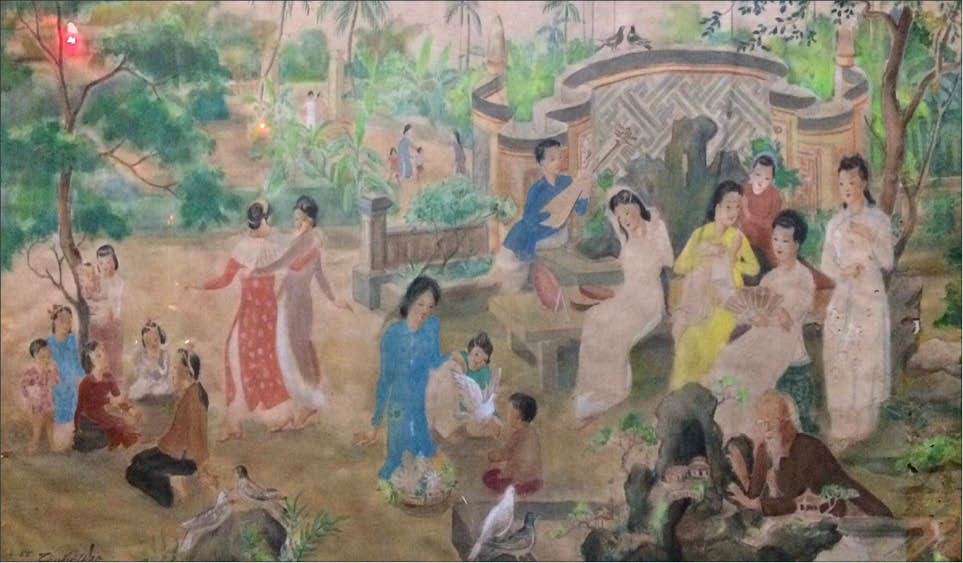
Ladies in the garden (lacquer)
Painter Ton That Dao was born to an old noble family in 1910 in Phu Cat village, and died in 1979 in Gia Hoi, Hue city. He was a trained artist at the Indochina Fine Arts College course VIII and was a contemporary with renowned painter Luong Xuan Nhi. After graduation, he returned to his hometown and was later appointed the Headmaster of Hue National College of Fine Arts when the school was established (precursor of the University of Arts today). Throughout his life, he made great contributions to the art of Hue.
Deceased painter Ton That Dao was particularly keen on drawing using all kinds of styles and materials such as lacquer, oil, or silk. Yet, in studying his art works, woman was the most commonly depicted motif throughout his artwork. A silk painting in Figure 1 presents a portrayal of a young lady with her glamorous beauty. Her side posture reveals a graceful body curve in light yellow ao dai. Facing the viewer are her delicate facial features: willow leaf eyebrows, straight sharp nose, and soulful eyes.
The lady is portrayed against the background of a bamboo shade and a vase of white lotus. The image of white lotus symbolizes purity and nobility, as a parallel to the human figure nearby. The painting is filled with Eastern spirit on a contrasting assembly of yellow and blue. The hot and cold colors stand in stark contrast, but at the same time, the gentle color nuances still captivate viewers for their subtlety.

Portrait of a young lady (silk)
With Ladies in the garden (Figure 2) on lacquer, Painter Ton That Dao depicted a pair of friends reading book in the garden. The two girls wearing ao dai and mấn on different poses create the vitality of the work.
As for Binh Phong (the screen) (Figure 3), this is a silk painting about communal activities with many characters. The painting features little and scattered appearance of male figures whose presence is only depicted through the image of an old man sitting on a rockery in the lower right corner, a young man sitting playing musical instrument close to the screen, a boy sitting with his back on the foreground, and the figure of a boy on the road in the distance. The rest shows the outnumbered figures of ladies and girls.
The ladies are presented in elegant ao dai while gathering in several groups, creating a rhythmic flow around the focal point of the main group in front of the screen’s center. They are chatting, brushing their hair, or sewing and embroidering in music. These feminine activities are evocative of coziness and peace. In addition, nature is beautifully and vividly depicted in the painting with green, leafy trees and doves (the symbol of peace) to bring about a sense of serenity.

Bình phong (The screen) (silk)
Looking at Binh Phong, we have the impression that the whole painting is a garden of joy and happiness where the women are the brightest and most vibrant blooms that the Creator has gifted to mankind.
In addition to these works, a series of other paintings also present the beauty of women from the author’s varied perspectives such as Ca Huế (Hue folk singing), Sen trắng (White lotus), Ngự Bình (Ngu Binh mountain), Đàn thập lục (sixteen stringed Zither), Ba thiếu nữ (three young ladies), Chị em (Sisters). Woman figure in Ton That Dao’s paintings reveals a gentle, feminine but gracious beauty. These works represent the thoughts and emotions of the painter: a glowing praise and high respect for the beauty of Vietnamese women.
Posts and photos: Hong Ha
